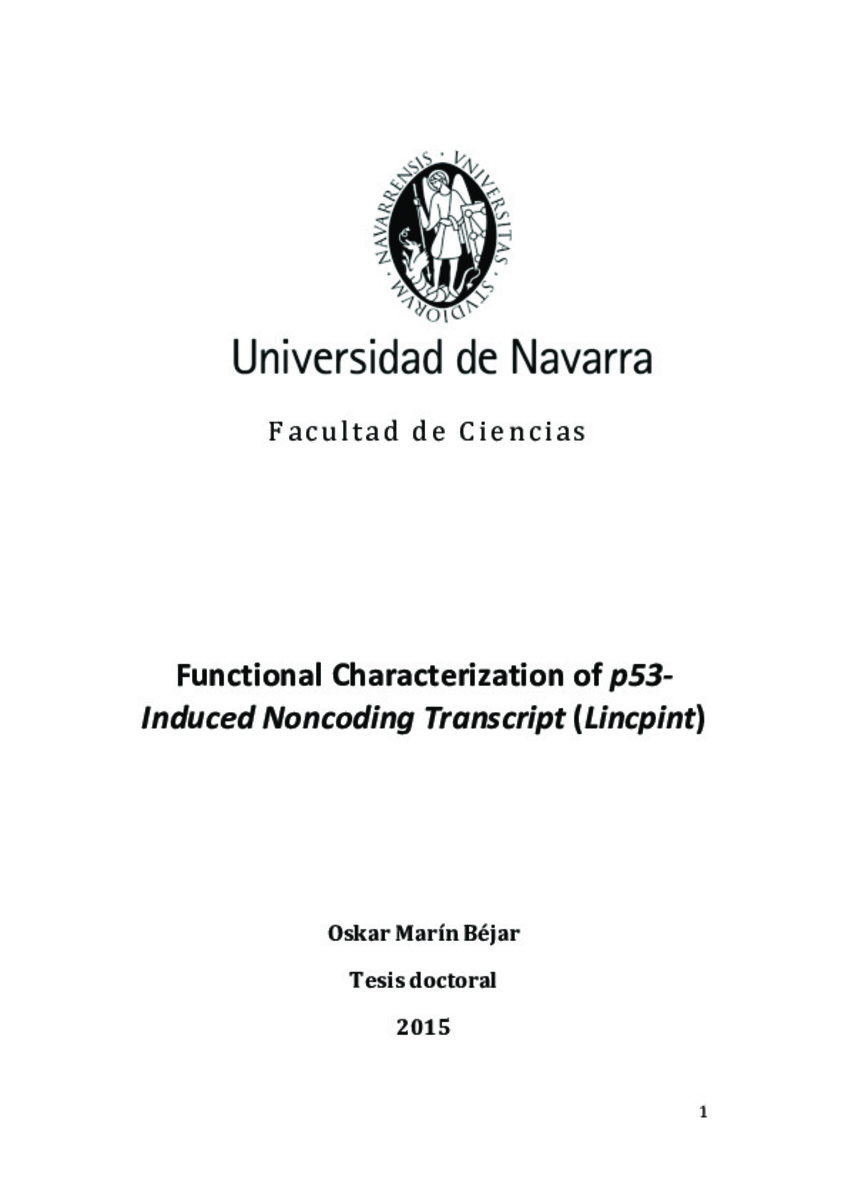Functional Characterization of p53: Induced Noncoding Transcript (Lincpint)
Palabras clave :
Materias Investigacion::Ciencias de la vida
Genética humana
Cultivo celular
Genética molecular
Fecha de publicación :
26-may-2015
Fecha de la defensa:
29-jun-2015
Cita:
MARIN BEJAR, Oskar. “Functional Characterization of p53: Induced Noncoding Transcript (Lincpint)”. Huarte, Maite (dir.). Tesis doctoral. Universidad de Navarra, Pamplona, 2015
Aparece en las colecciones:
Estadísticas e impacto
0 citas en

0 citas en

Los ítems de Dadun están protegidos por copyright, con todos los derechos reservados, a menos que se indique lo contrario.







